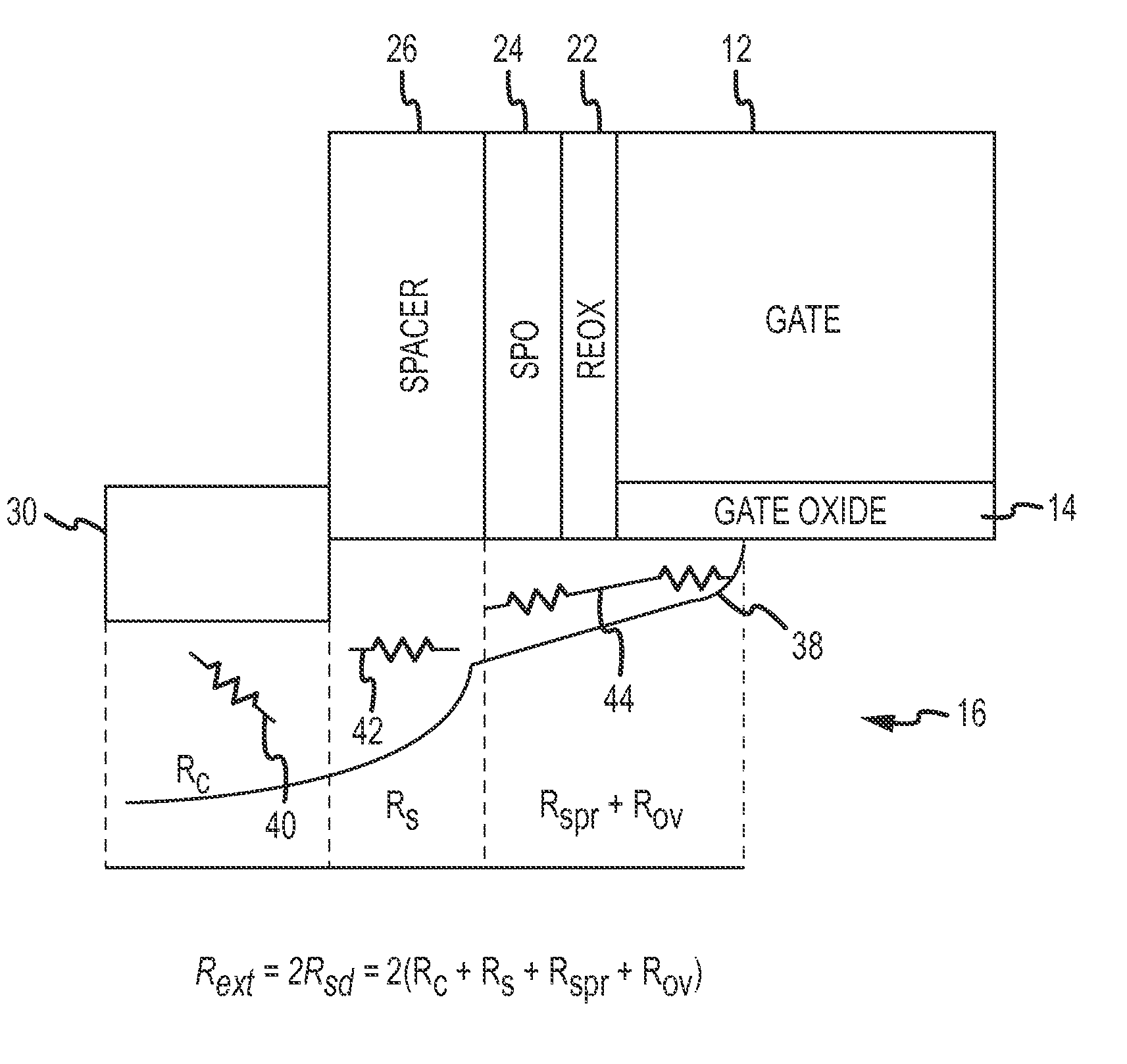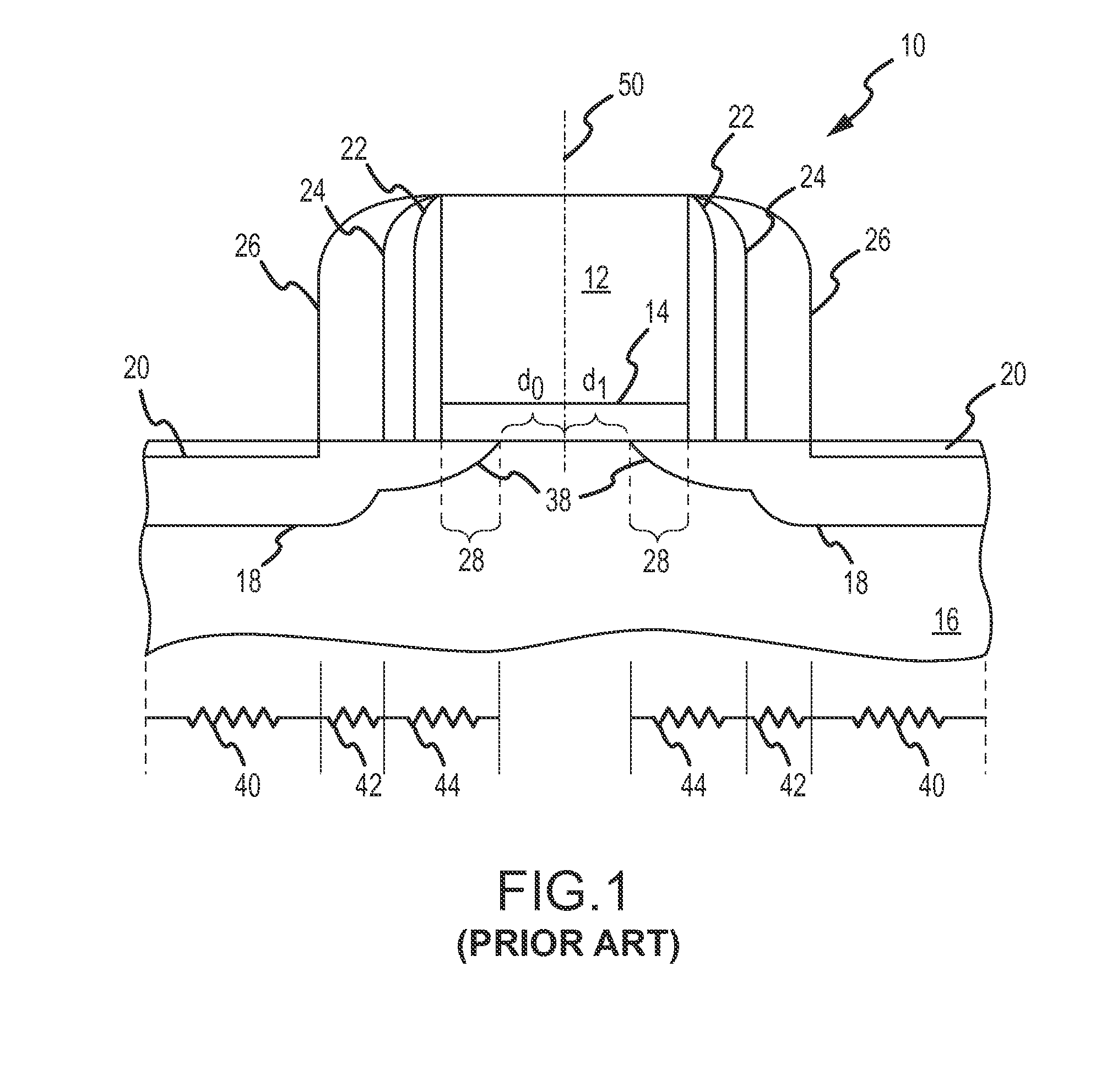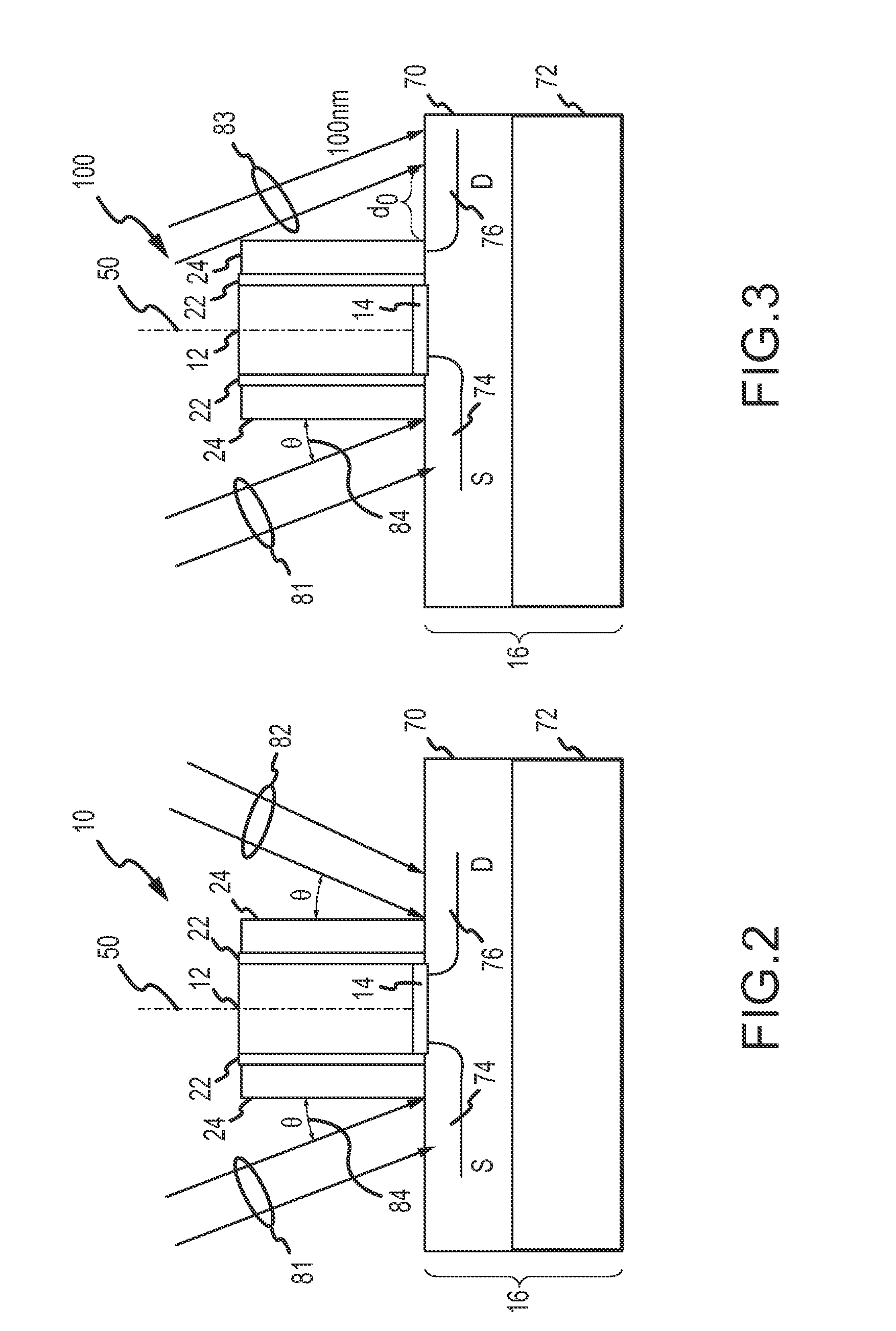MOSFET with asymmetrical extension implant
a technology of asymmetrical extension and mosfet, which is applied in the direction of basic electric elements, electrical apparatus, and semiconductor devices, can solve the problems of significant barrier to high drive current and high performance, unexpectedly high external resistance of devices, and unsatisfactory known (110) mosfet devices, etc., and achieve the effect of dramatic reduction of external resistance (rext) of structures
- Summary
- Abstract
- Description
- Claims
- Application Information
AI Technical Summary
Benefits of technology
Problems solved by technology
Method used
Image
Examples
Embodiment Construction
[0019]In general, the present invention relates to (110) channel pFET structures incorporating asymmetrically positioned drain and source extensions that greatly reduce Rext. In this regard, the following detailed description is merely exemplary in nature and is not intended to limit the range of possible embodiments and applications. Furthermore, there is no intention to be bound by any theory presented in the preceding background or the following detailed description.
[0020]For simplicity and clarity of illustration, the drawing figures depict the general structure and / or manner of construction of the various MOSFET embodiments. Elements in the drawings figures are not necessarily drawn to scale: the dimensions of some features may be exaggerated relative to other elements to assist understanding of the exemplary embodiments. In the interest of conciseness, conventional techniques, structures, and principles known by those skilled in the art may not be described herein, including, ...
PUM
 Login to View More
Login to View More Abstract
Description
Claims
Application Information
 Login to View More
Login to View More - R&D
- Intellectual Property
- Life Sciences
- Materials
- Tech Scout
- Unparalleled Data Quality
- Higher Quality Content
- 60% Fewer Hallucinations
Browse by: Latest US Patents, China's latest patents, Technical Efficacy Thesaurus, Application Domain, Technology Topic, Popular Technical Reports.
© 2025 PatSnap. All rights reserved.Legal|Privacy policy|Modern Slavery Act Transparency Statement|Sitemap|About US| Contact US: help@patsnap.com



